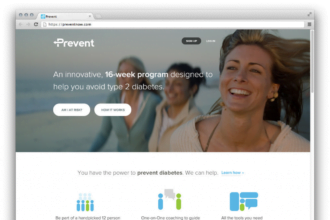As patients continue to take more control of their healthcare, local, personalized medical device marketing strategies are becoming increasingly impactful. We have reached an unprecedented level of digital connectivity in the modern world that is quickly changing how we consume (and retain) information. Last year, eMarketer estimated there to be 190.5 million smartphone users in the United States, along with a total of 314 million Americans surfing the web. With such widespread use of the internet, information is more accessible than ever before, and consumers are in turn taking it upon themselves to research and inform their healthcare decisions. Recent data from Google confirms this notion: 43% of consumers now say the internet is their first point of reference for health-related info, whereas only 14% regularly seek out the advice of their physician. This marked shift has had a ripple effect in the world of medical device marketing, as digital direct-to-patient (DTP) practices are quickly outperforming traditional, physician-centric strategies.
Empowering Patients
Because more and more consumers are proactively carving out their own path to treatment, it is essential to directly engage the patient as she conducts her research. This is especially important as the amount of face-to-face contact an average patient gets with her health care providers continues to decline. DTP marketing opens up a new channel of communication that saves time for both doctors and their patients. Medical device marketing can no longer exist simply as a means to raise awareness; it must provide actionable advice and educational resources. Local, personalized strategies do just that, as co-branded microsites are proving particularly impactful — with an average cost per lead savings of 64%.
DTP Tools and Resources
Patient portals are designed specifically to match a patient’s level of understanding, regardless of whether they’re researching treatments for arrhythmia or comparing competing brands of pacemakers. Typically, these portals contain general descriptions of symptoms and conditions, as well as treatment options, animated demonstrations of the device’s use, and patient stories or testimonials. In this way, the site itself becomes a resource to which a doctor can refer a patient, boosting engagement and empowerment on the patient’s path to treatment. Meanwhile, co-marketed websites target a single device client and offer relevant content about both the client and the technology. To keep the focus centered on patient engagement, these sites target a specific geographic area while highlighting the physicians and medical practices themselves; the technology is introduced secondarily. This is noteworthy in light of the shift in patient preferences to shop locally — 96% of consumers prefer “local” products and vendors, citing the high degree of personalized services as the primary draw.
Measurable Results
As DTP marketing strategies improve, so too do the tools to measure their efficacy — specifically in tracking the leads they produce (through phone numbers and form leads) and the revenue ultimately generated. For example, after you earn a new lead through either a patient portal or microsite, the medical device marketer can follow that lead through the entire patient pipeline, identifying whether or not a resulting appointment led to a procedure involving their device. Such transparency allows for detailed insights into a marketing campaign’s ROI and overall impact — in other words, marketers can finally become sales heroes, too. An additional advantage of the co-marketing model is that the cost of the campaign is typically split or, in some cases covered in full by the medical practice. The bottom line is that the combination of lower costs and proven return on your investment make DTP medical device marketing a no-brainer.








